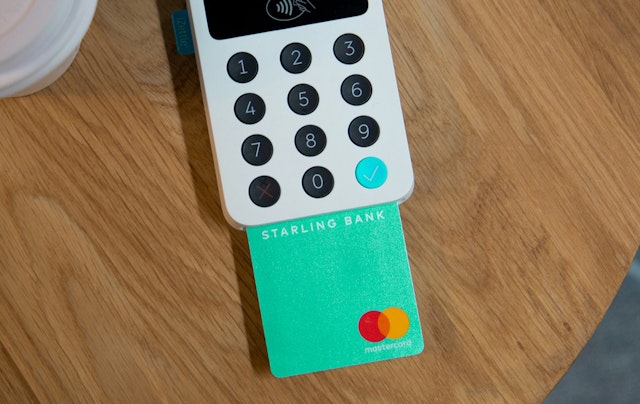How a challenger bank redesigned the credit card for the vertical era
It was a deep dive into the way we interact with digital products that inspired Starling Bank to do something radical yet entirely simple with the physical: flip the bank card design from landscape to portrait.
Starling is a tech-led, mobile-only competitor in the finance market. The company was founded by the former chief operating officer of Allied Irish Banks, Anne Boden, in 2014 in order to bring the banking world in line with the digital.
Aside from its mobile customer interface, the brand prides itself on transparency, digital nativity and its ability to help customers visualise their cash through systems. Starling still operates like a startup (its first mobile-only retail current account only went live in May 2017), and like most startups, everything from its tech to comms teams are still based in-house.
Thom Stoodley, lead designer at Starling, explained the brand is still forging an identity. “We know who we're based off who are customers are,” he said. “Whereas outside agencies would tell us who we are, rather than finding out personally.”
Still developing, Starling has adopted a ‘can-do, make-do’ attitude, derived from Boden’s rebuttal against the norm. So, when it came to designing bank cards, the team’s instinct was to rethink the norm, too.

Bank cards’ horizontal design and embossed numbers are an anachronistic relic from the days of carbon copy machines. But customers use them in portrait – from inserting a card into an ATM to filing them away in smartphone wallets.
Once Starling had clarified this insight it was faced with a daunting prospect: read through its card provider’s guidelines to see if a vertically designed bank card was possible. Mastercard had happily provided the bank with a 157-page tome, which art director Mark Day set about reading.
Alexandra Frean, head of corporate affairs at the brand, believes it’s this kind of commitment that elevates Starling above the heritage commercial banks who continue to abide by the outdated norms they inscribed.
“I guess most of the traditional banks just can't be bothered to think, ‘Well how can we change the design, meet all those requirements and make a card that looks beautiful?’,” she said. “We wanted to do banking differently, and Mark took the trouble to figure out how you could bring about a lot of change while sticking to the rules.”

What did Day learn?
“The Mastercard logo has to be in certain places, the chip can't move, the magnetic strip can't move...” recalled Stoodley. “But the hologram is allowed to be on the back, so we put it on the back. We wanted to declutter the front. And the signature panel on our cards is the smallest signature panel you can get.”
The result is a minimalist, vertical design that comprises only the chip, the bank’s name and the Mastercard logo. Personal identifiers and other details have been moved to the back, and are printed rather than embossed. The design team pored over the brand’s colour palette to select a bright teal for consumers and navy for business customers (“We didn't want to go for a black card like every business account”) and rounded the card's edges, too.
Starling focuses the bulk of its efforts on its USP – the app and its digital products. The bank cards are, if anything, a totem of what the brand stands for: difference and ease, beautifully designed. They’re also the only physical connection between Starling and its customers, as high street branches, cheques and paper statements never existed in its world.
“Design is fundamental,” said Stoodley. “It's such a key thing that everybody's focusing on in terms of business.
“This is something tactile that is just as representative as what we're doing in the app.”
The project is simple, but sparks the question: what other consumer products need to be redesigned away from their original use cases?


